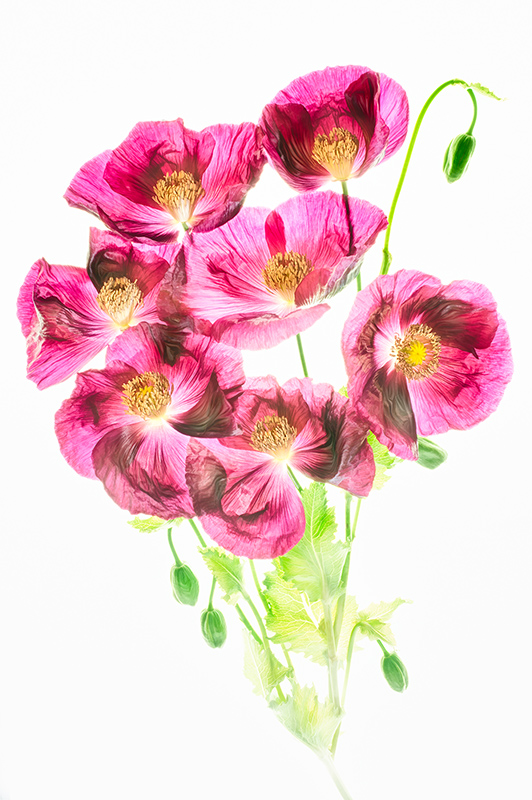It’s perfectly legal in this country to cultivate the Opium Poppy, Papaver somniferum, for decorative purposes. But this pretty flower, shown in the image below, has long caused wild dreams and flights of fancy. For example, the poet Samuel Coleridge wrote his poem Kubla Khan in 1797 following an opium-inspired dream that was interrupted by a bill collector. Equally, this innocent-looking flower is responsible for much human misery, from the killing fields of Afghanistan to the addictions and overdose deaths caused by the stronger products refined or synthesized based on opium.

When you buy an opium poppy plant from an American horticultural nursery, the name is likely to be changed, as if naming this flower something other than what it is makes it less deadly, or more licit. So one nursery I know calls the Opium Poppy a “Purple Breadseed Poppy,” and there are other cloaked names in use as well.
By whatever name, it is an easy flower to grow (the ones shown here are from my garden, for decorative purposes only of course!). In case you are curious, opium is refined from the paste that accumulates inside the seed pods that form after the flower has bloomed. A single poppy pod wouldn’t be enough—it takes a great many poppies to make a usable quantity of opium.
Want to learn how to make images like this one from beginning to end? There are three spots left in my Photographing Flowers for Transparency workshop next weekend (I won’t be giving this workshop again in this country until 2015).
Pingback: Inversions (and lions, and tigers, and bears, oh my!)